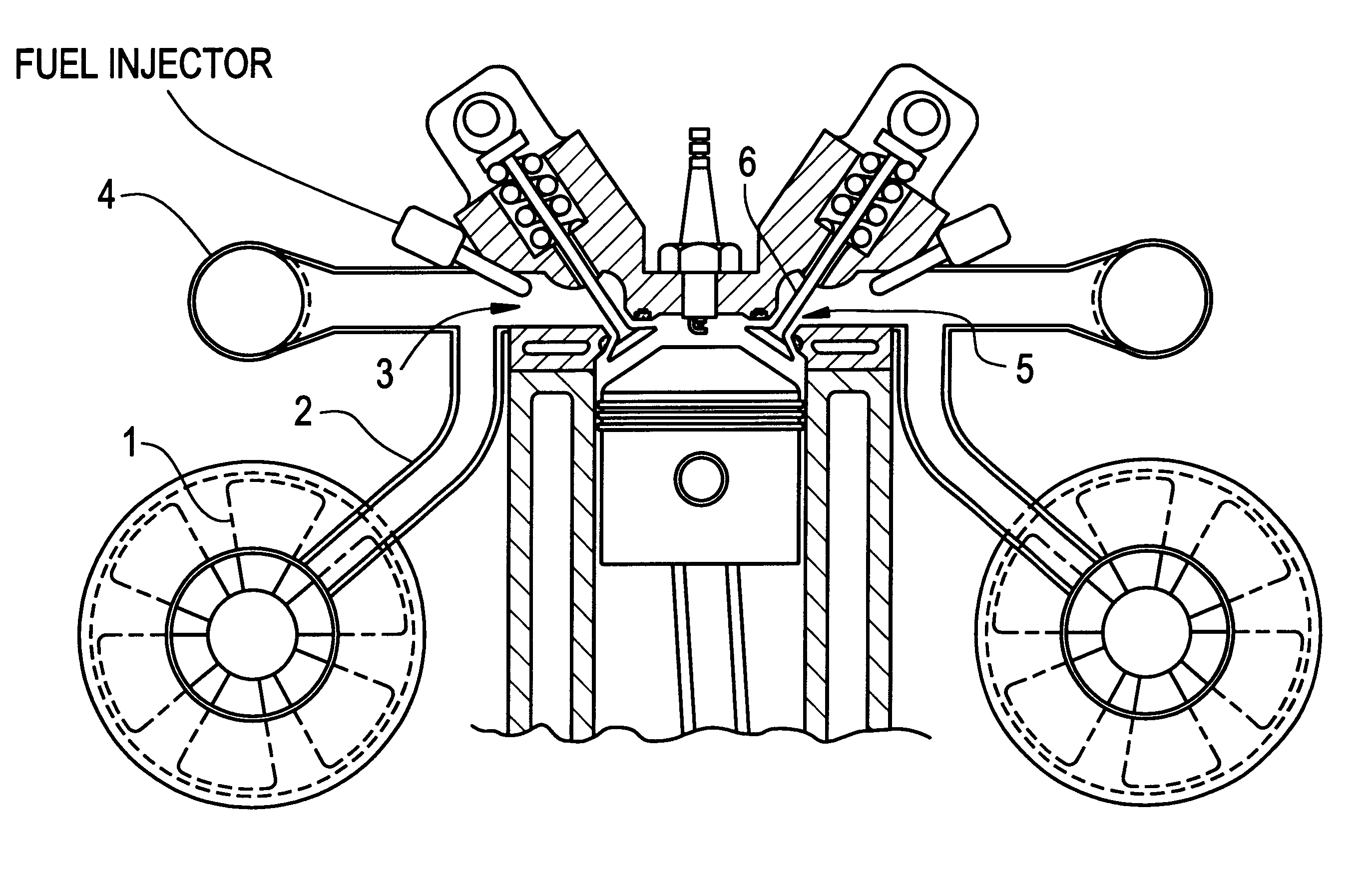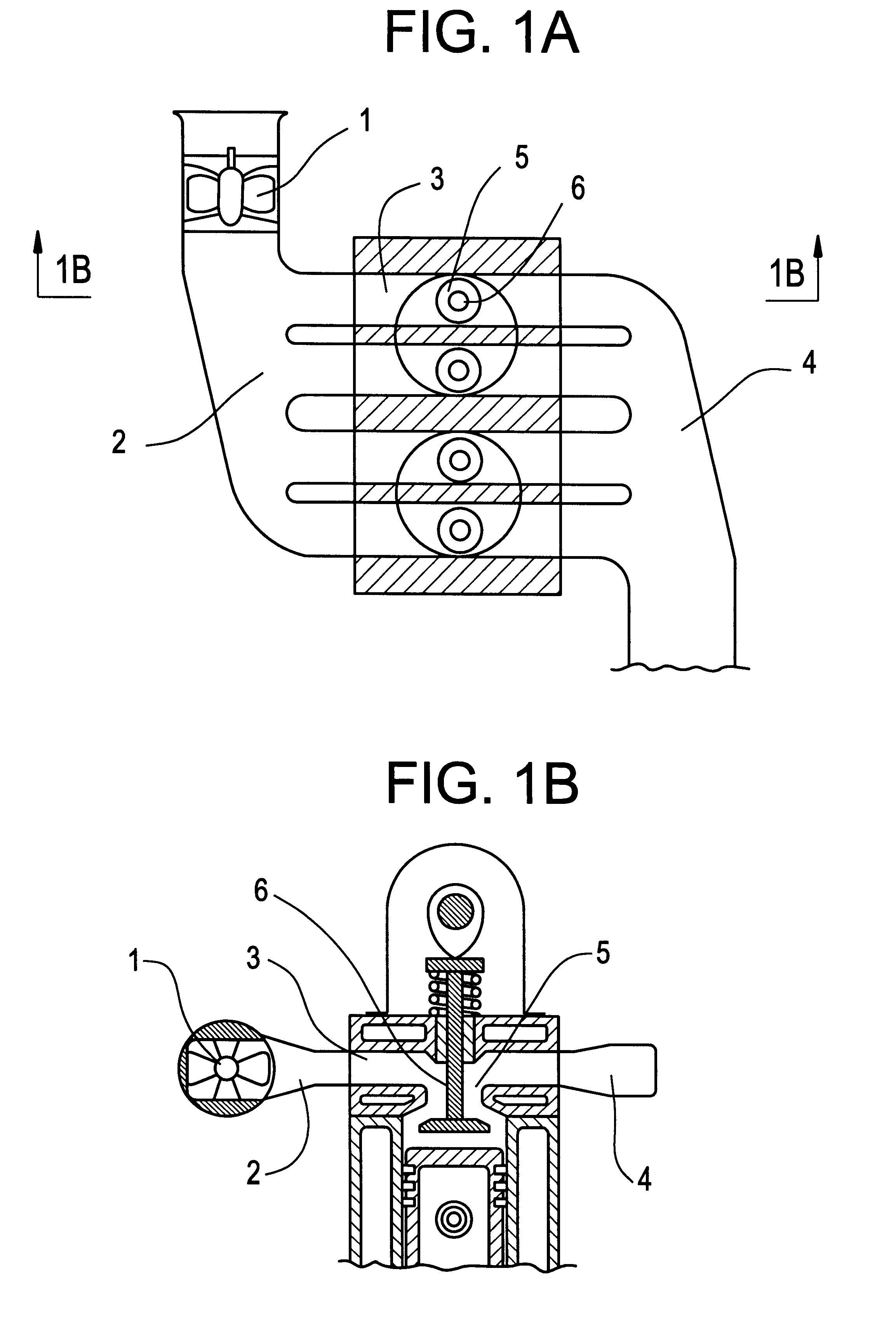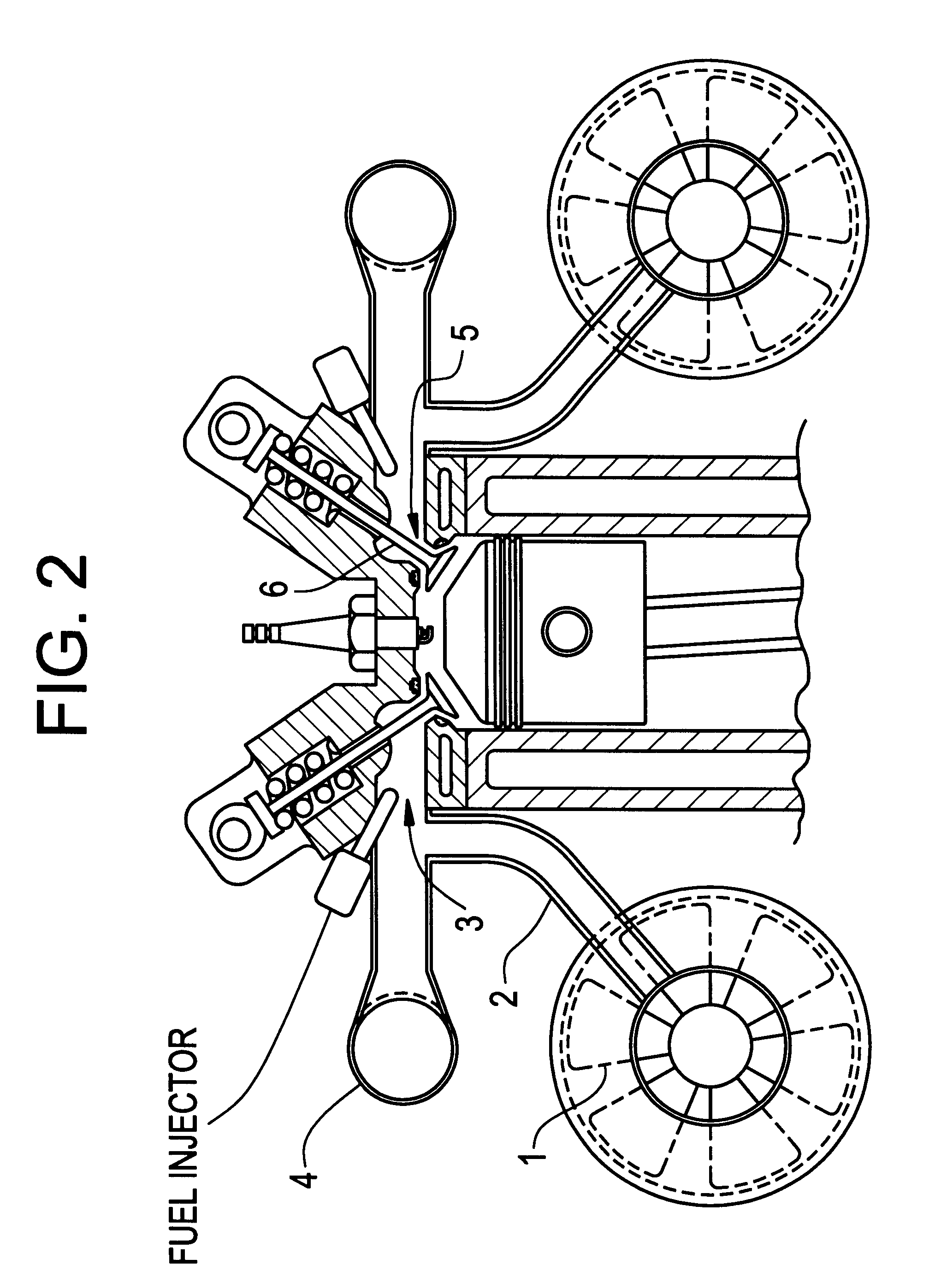Breathing system for internal combustion engines, using dual duty (alternatively exhaust-intake) valves and a forced air supply
- Summary
- Abstract
- Description
- Claims
- Application Information
AI Technical Summary
Benefits of technology
Problems solved by technology
Method used
Image
Examples
Embodiment Construction
In the system of the invention all valves of the cylinder (both the intake and the exhaust valves of conventional engines) are driven simultaneously to accomplish the dual-duty, or dual-function, of exhausting combustion gases into passages external to the cylinder and then (in the next power cycle) admitting fresh air from the same passages into the cylinders. To said passages a continuous supply of air is forced to flow, by means of a fan (or a blower, or a compressor) driven by the engine, in order to sweep away combustion gases during the exhaust stroke and feed sufficient air during the intake stroke.
During the exhaust stroke the flow of air being supplied will be slowed down by the outcoming exhaust gases, while during the intake stroke the flow of air will be accelerated by the suction effect (or vacuum) produced by the piston moving away, while during the compression and power strokes the flow of air supplied will not be disturbed. Therefore, it may be estimated that the vol...
PUM
 Login to View More
Login to View More Abstract
Description
Claims
Application Information
 Login to View More
Login to View More - R&D
- Intellectual Property
- Life Sciences
- Materials
- Tech Scout
- Unparalleled Data Quality
- Higher Quality Content
- 60% Fewer Hallucinations
Browse by: Latest US Patents, China's latest patents, Technical Efficacy Thesaurus, Application Domain, Technology Topic, Popular Technical Reports.
© 2025 PatSnap. All rights reserved.Legal|Privacy policy|Modern Slavery Act Transparency Statement|Sitemap|About US| Contact US: help@patsnap.com



